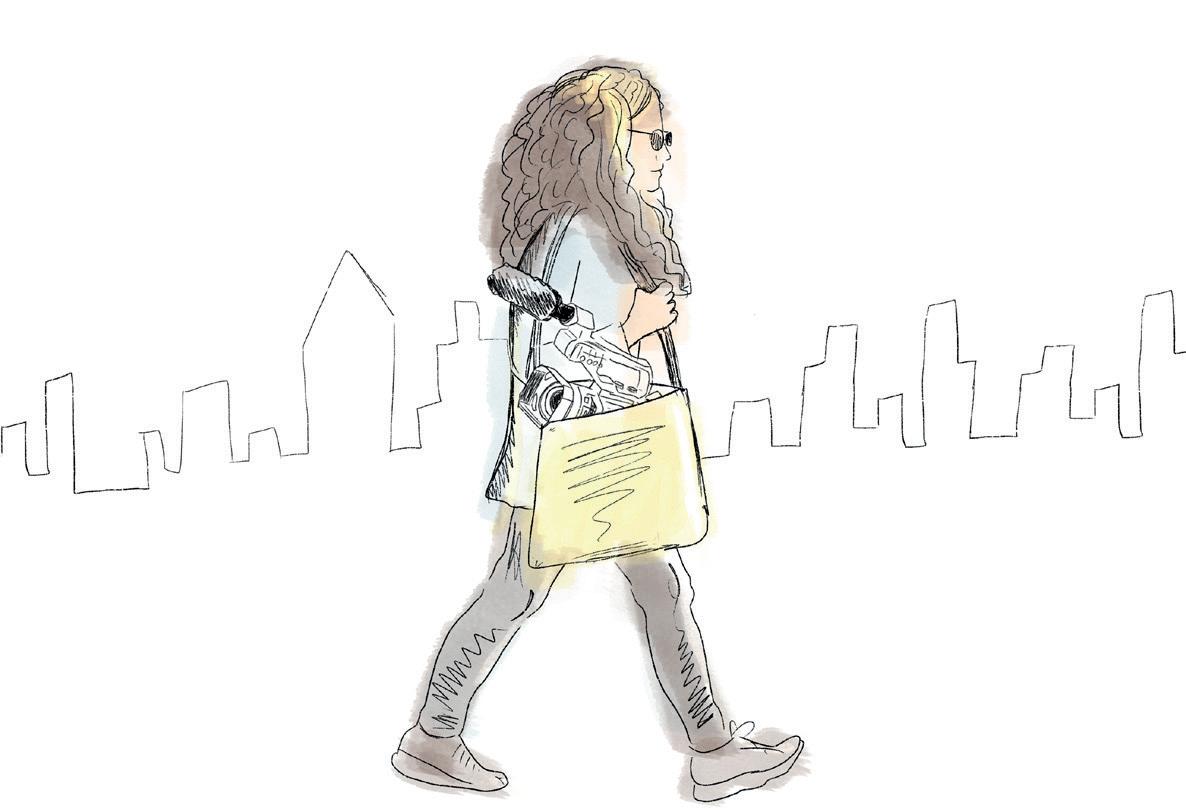
12 minute read
HADAS NEUMAN
Hadas Neuman THE PRODUCTION OF THE UNPREDICTABLE
“A CAMERA IN A BAG" JOURNEY OF A FILMMAKER WALKING DOWN THE STREETS
Hadas Neuman (Israel/Netherlands) is a BA graduate with an Honors scholarship majoring in script-writing and directing at Sapir College. In a more informal setting, she can also be introduced as a filmmaker walking down the streets (with a camera in her bag). Her short films (Prove it, Goosebumps, Fairy on a roof, and more) and feature documentary (The European grandma project, co-direction; 2018), have been screened at global festivals and won awards. Currently, her artistic practice is shifting towards the point at which fiction and documentary intersect. She is welcoming that very moment with a mix of excitement and anticipation (even suspense), visually expressed by the blank space below:
Hadas’ latest experimental short documentary, Two people will come, with balloons, has won the Next! Award (WIP) at the DocAviv International Film Festival 2021. In her research, ‘The production of the unpredictable’, she explores different ways in which she can use unpredictability as a narrative tool to reclaim the spectacle of everyday life and incorporate it into hybrid works that blend documentary and autofiction (where autobiographical elements meet fictional storytelling).
Illustration by Liran Kapel
Once you print something on a page, it will forever stay there. However romantic that might sound in our transient world, in this context it means that the very page will not keep up with the artist. If you wish to stay up to date with the ever-evolving definitions and concepts driving the artistic process, please follow me in all acceptable ways.
FILMING and EDITING are at the base of the practice I’m about to describe (NOT WRITING) Therefore I WILL FOLLOW A SIMPLE RULE HERE: I’M GOING TO USE ONLY 831 WORDS WHICH IS THE AVERAGE AMOUNT OF WORDS ONE CAN READ BEFORE GETTING BORED. (Based on Oxford Academic Journals fictional research "The tiring bulk of words", published in 2016 in the magazine Words and Fatigue. If I might add, more research is needed concerning the average amount of words that a filmmaker can write before losing her focus.)
I WILL START IMMEDIATELY: I found a way to make films that brings me joy as a creator. Enjoyment should be part of the basic production equipment list, right there next to 4x4 white Reflector canvas, gobo arm and sandbag.

I call this way ‘A CAMERA IN A BAG METHOD’. *Yes, I know there are other bag carriers out there (Hey Ursula, Hey Agnes), they are nice as well.
So, let’s say a filmmaker (me) is walking down the streets with a camera in her bag. Let's add that the camera can be pulled out at any time, ready to shoot. Let's also add that the process of walking needs to be prolonged – meaning hours, days, even weeks. Above all, it MUST be aimless, unsystematic, undirected. Reflection is allowed only in retrospect.
MY BAG IS NOTHING TOO FANCY – A SIMPLE TOTE BAG WITH A LEOPARD PRINT, BUT LET ME EXPLAIN ITS MAGIC: The walking pace will cause the leopards’ heads to move and their legs to shuffle. What is most important, however, is that this time they are not hunters but gatherers. As you might have guessed, I am a gatherer myself. I collect stories – and this is how: I allow myself – the method allows me – TO BE freely attracted to places and people, to film fragments of the everyday, riddled with transient encounters – all of them dictated by chance. I follow the method described above almost religiously (in the most atheist way possible).
Then comes the moment when I can look at the material and reflect (usually right after my hard drive is signalling)
WHAT DID I FILM: Exclusively trash, starting with a box of bourekas with a note "eat me" left on a bench. Ending up with a collection of various packaging styles spotted on the streets.
Mostly dogs. Started with the real deal, and proceeded with illustrated ones, even (god forbid) pet shops.

Abstract footage, close-ups of light reflections, or electric boxes losing their box-shaped structure due to extreme zooming in, resulting in an undefined image that can later be attached to a new meaning.
An older version of Anne Frank (either visiting Amsterdam from another dimension or a very convincing lookalike) strolling around Anne Frank’s house.
Black Lives Matter protest and exploration of the hidden identities of placards by filming them from behind. (see Image on the left)
A man sitting by himself in the park for an hour without moving.

"Placards Protest" (June 2020)
“Not to find one's way around a city does not mean much. But to lose one's way in a city, as one loses one's way in a forest, requires some schooling/training.” (I’m schooling myself, thank you, Walter Benjamin) PARKing (May 2020)

WHAT IS CINEMATIC WANDERING? / WHO IS A CINEMATIC WANDERER?
I’m a wanderer with a camera. Investigator of landscapes. Lens cap off, lens cap on. A collage maker of moments. I hang around. I am alerted but not chasing anything. I am after reality’s irregularities – things that don’t seem right but at the same time feel familiar. I pass by them, they pass by me. As I wander, I’m zooming in and out of things, people and behaviors. It amazes me how extraordinary, how weird, how funny, how strange those irregularities can be.



WHY DID I FILM WHAT I FILMED (or: where does the filmmaker's sensitivity turn when it is unmediated and undirected): I try to extract from my subconscious reasons for my particular attractions. I weigh it against the idea of randomness. The random has become my storytellinginstigator, I'm using it as a narrative tool (or as a way to attract ideas) – which is to say that random and unpredicted are my (and my camera’s) city guides. However, when I’m done with all the shooting, I treat all those chance events with a solid dose of introspection, even psychoanalysis. To search my subconscious motives is, of course, to look for a pattern – ultimately it means to go against the randomness of the supposedly random. It is a playful-constructive process that reveals as much about the subject matter of my film experiments as it does about me (or whoever is filming). It touches my most inner, deep, personal place as a creator. It leads me to tell only authentic stories that are at the core of the self that chose to film that moment or at the core of the encountered people. I call it THE PRODUCTION OF THE UNPREDICTABLE. (Note: If you are one to appreciate the alliteration here you will realize that, at least, the name of the method is not random.)
“It is true that filming, especially a documentary, is gleaning. Because you pick what you find; you bend; you go around; you are curious; you try to find out where are things. However, you cannot push the analogy further, because we don’t just film the leftovers.” (Nicely put, Thank you, Agnes Varda)

Big lipped sofa" (April 2021)
WHAT IS VOICE OVER? No, I am not talking to myself on the streets, but it is a very important element in my work. While filming I entertain myself (in my head, not out loud) by making up sentences as the mundane moments are unfolding in front of me. While in my head, the words flow as a stream of consciousness but Later, I record and edit them, tame them into meaning: as playful observations and instructions. With the help of a V.o I take the everyday and find a narrative in it. The V.O also functions as a layer of comedy to a dramatic, serious situation. "Everyday" (March 2021)
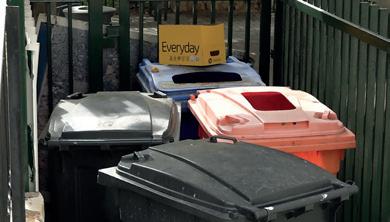
WHAT IS THE ATTRACTION to capture the everyday? I am arriving from a country in which: At the age of 7, I would be packing my gas mask to school, daily. At the age of 12, I would be stepping out of the bus due to suicide bomber suspicions. At the age of 18, I would be holding guns in the army for 2 years. At the age of 24, I was hiding in shelters. I lived in a reality that I accepted as normal since it was the only one I knew. In a country where normal is, in reality, atrocious, I have developed an attraction to capture and find narratives where there supposedly aren’t any: in the everyday, the mundane, the ordinary. (and eventually show how politics seeps in even in stories that emerge more from the everyday)
AND THIS IS WHAT PUTTING IT INTO PRACTICE LOOKS LIKE: One-month experiment practicing ‘a camera in a bag method’ in one neighborhood in the city of Givatayim (Israel) ↓ Archiving the material, I find: the vast majority of the people I filmed are elderly men ↓ I ASK MYSELF: WHY? (don’t worry, I ask myself other things as well, sometimes) ↓ It takes me a (very) little while and then it dawns on me: The neighborhood where I filmed all these elderly men, is where my father lives. A father I have no contact with (ever since I was born) and no access to. It became obvious: subconsciously I was drawn to a big, unresolved issue in my life. One that I was sure I had come to peace with already. Thus, the randomness in my filming experiment is not so random, it turns out. All this time, I was filming the absence. Aimless shooting reveals itself as an inner compass, which guided me to deal with this silently pressing issue. ↓ Flabbergasted by this discovery (and by the word “Flabbergasted”), I decide to film more men ↓ 100 of them: ↓
“If it is a human thing to do to put something you want, because it's useful, edible, or beautiful, into a bag, or a basket, or a bit of rolled bark or leaf, or a net woven of your own hair, or what have you, and then take it home with you, home being another, larger kind of pouch or bag, a container for people" (Nicely put, Thank you, Agnes Varda)


The man who stares ambiguously The flower man who every day chop the tip of the rose The security man who is always sent to problematic places
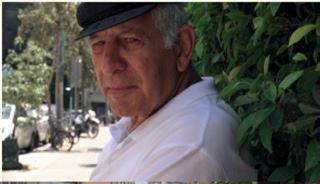
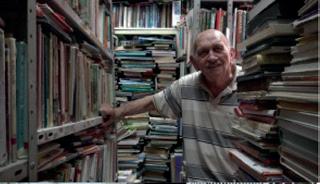
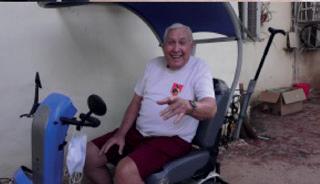
The man who at all times holds in his right shirt pocket a picture of himself from when he was young (including its negative) The man who owns an electric scooter he calls “Tarataike” The bookstore labyrinth man who each day decides how old he is
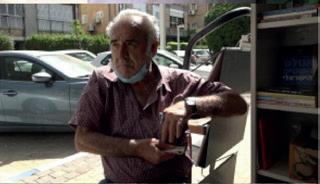

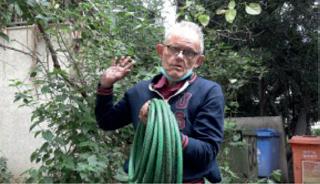
The man who walks the exact same way as his dog The man who says plants are like human The man who dances to the song “We’re in the army now”

100 MEN – A FEATURE-LENGTH DOCUMENTARY
The log-line A 36-year-old filmmaker wanders the streets with her camera, filming small encounters with random older men. Why is she doing this? Because on one of these streets, lives her father, whom she doesn’t have contact with or access to. The brief meetings with the men reveal not only their stories but also her own. family secrets and history. The encounters function as part documentary, part performative dress rehearsal for the one meeting that she anticipates the most; the 100s man - her father.
The thing you write for the funds The personal, intimate story becomes socially relevant as the encounters reveal a broader perspective of society. As a result of the multiplicity of participants, the form itself constitutes fieldwork, social research, and by definition, a kind of auto-ethnography, by revealing elements of the social structure. It achieves this merely by putting all the men together and having one agent (me) move between all these worlds as the narrative evolves. These interactions often expose gender dynamics observable between the filmmaker and the participants. Recurring motifs such as different forms of masculinity, loneliness, family secrets, remorse, the question of the relevance of a person at a certain age, and power relations rise to the surface.
The things I discuss with my therapist This film could make an excellent case study for psychologists, or more generally, for people interested in the workings of the mind. Not only because this happened to be my experience, I think that if one allows oneself to be completely free of associations and sufficiently unfocused one will stumble across something deeply important and personal for them on an existential level – and that simply by wandering the streets. It is a grand theory of mine, every filmmaker who'll dare to do that can discover what it is for him or her. The process is not only the discovery of what that thing is, but through the filming and making of the film, one can deal with or even resolve some dormant traumas. I could write about the therapeutic quality of filmmaking for hours, but I’m afraid that I would exceed my word count by doing so.
THE FIRST FILM in which I used this method, is a film I affectionately call “The hospital film”. Its creation was spontaneous: I picked up a camera, just like that and started filming people passing by. I would have never expected that it would turn into a film:

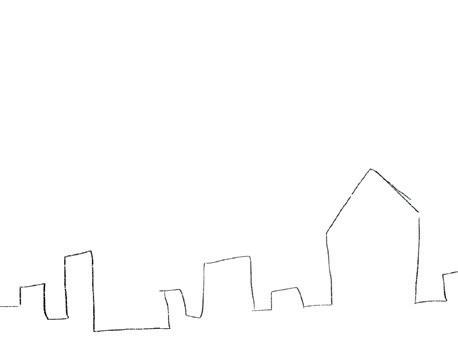
TWO PEOPLE WILL COME, WITH BALLOONS a short experimental documentary Docaviv International Documentary Film Festival NEXT! WIP Award 2021
While her mother is undergoing surgery, the director documents the act of waiting. When the time stretches as it does in a hospital, every passer-by, every gesture takes on a meaning. Desperately and whimsically she examines whether she could control reality through the act of filming, but soon reality shatters her efforts and leaves the terrible waiting time in her hands, as it is – infinite.










